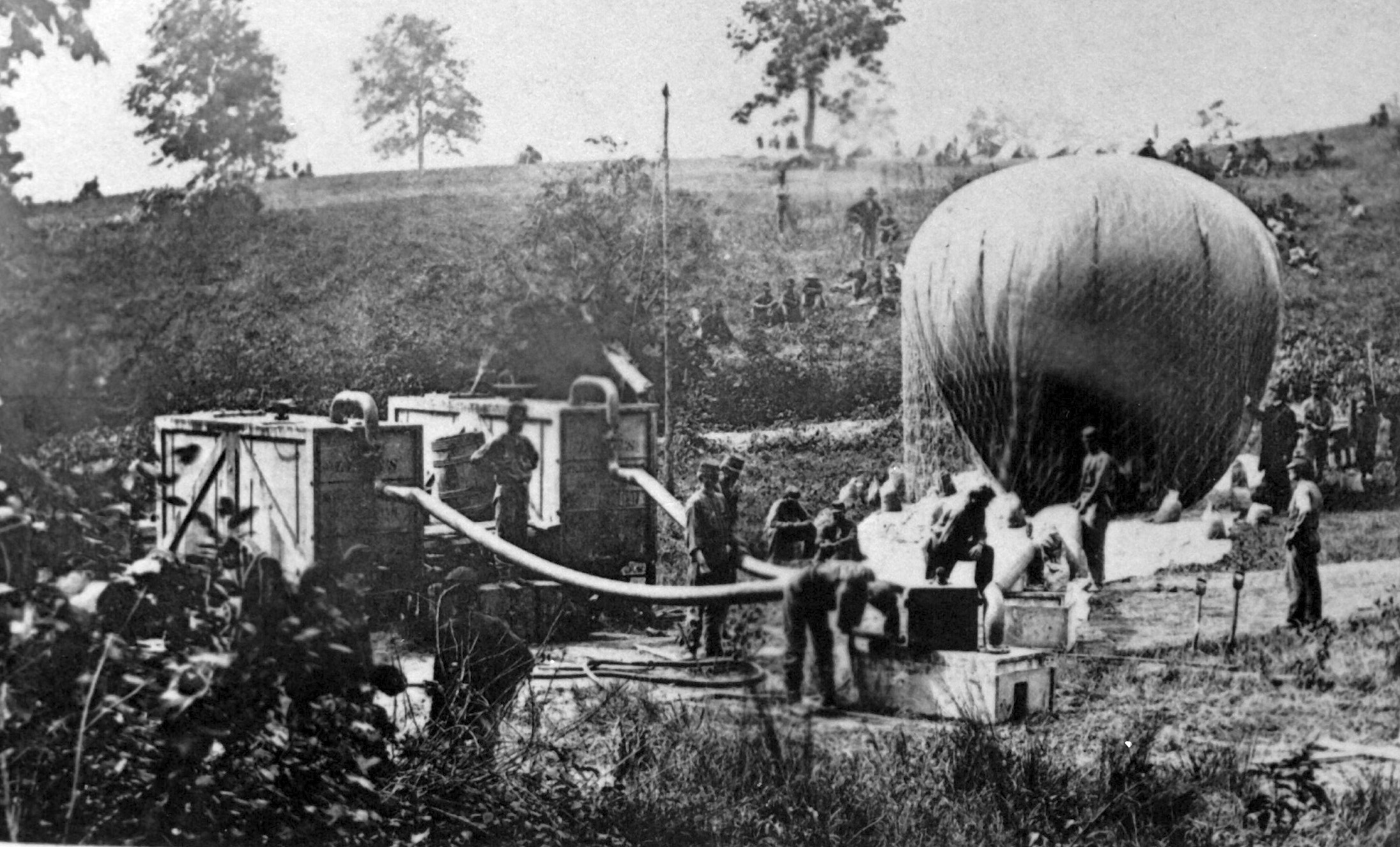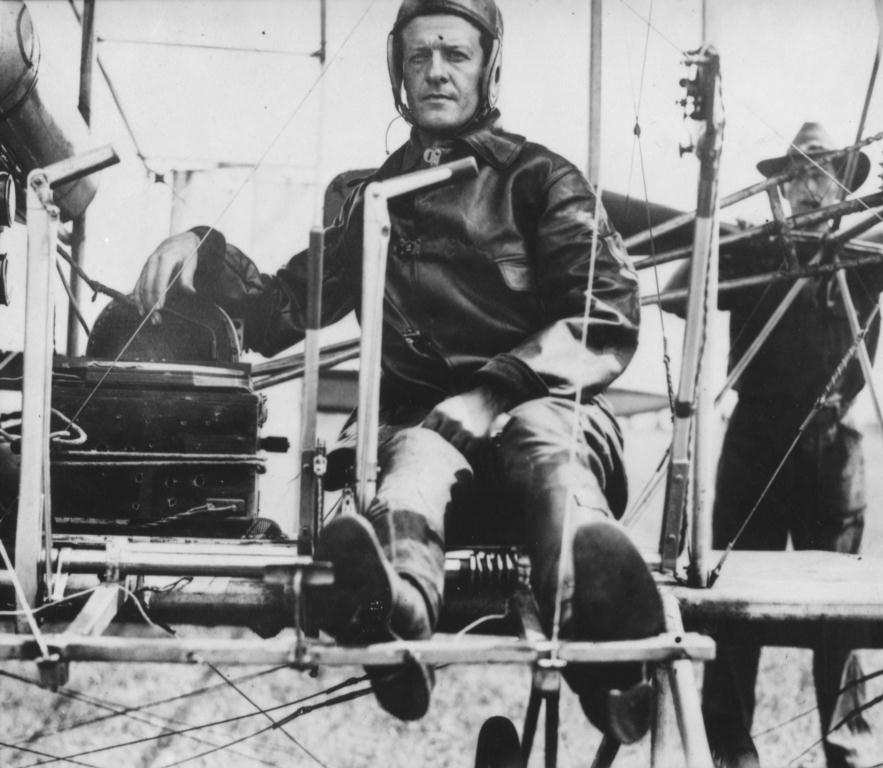Technically, the history of Army Aviation in the United States can be tied to the use of Balloons in the Civil War, when both the Union and Confederates used them for reconnaissance and to direct artillery fire. Their use would continue in the Spanish American war, where one was deployed in Cuba.

The Union Army's "Intrepid" is being filled with gas.
Heavier-than-air Army Aviation was tied to the Signal Corps which formed the first military Aeronautical Division. On 23 September 1907, this Division advertised for a flying machine, that was to have No gas bag, be built so it could be moved in a standard Army wagon, and it would be simple so that “an intelligent man” could quickly master it. It would carry two men 125 miles without landing and sustain 40 miles per hour in still air.

Foulois in a Wright Biplane.
As it turned out, the Army accepted the Wright brothers entry as Army Aeroplane Number 1. After some initial flight training by Orville Wright, First Lieutenant Benjamin Foulois flew the Army’s only airplane at Fort Sam Houston, Texas where he finished his aeronautical training by mail. Such was the sophistication of flight training at the time.
While this initial flight training was taking shape, issues of force structure and organization were being discussed among Army leadership. This period was also marked by numerous experiments and innovation in aeronautical flight. In 1910 alone, an altitude record in an airplane of 6000 ft. was set, an Army pilot and mechanic converted the skids on their Wright flyer to wheels, and another Army pilot fired two shots with a rifle at a ground target.

Members of the 1st Aero Squadron, with two Burgess Model H aircraft on North Island circa 1914.
San Diego has strong ties to Army Aviation, when in December 1912 the Signal Corps Aviation School was established on North Island. This location, later known as Rockwell Field, became home to the Army's first Aero Squadron, which was equipped with Burgess Model H and Curtiss planes. In 1914, the Aviation Section of the Signal Corps was officially created by the U.S. Congress.

A Curtiss JN-3 in Mexico during the Mexican Punitive Expedition in search of Pancho Villa.
Army Aviation gained its first combat experience in 1916 when the Mexican Revolution spilled into New Mexico. The Army sent the First Aero Squadron South of the border as part of the Mexican Punitive Expedition.
2001 Pan American Plaza, San Diego, CA
Phone: 619.234.8291
Información En Español
Contact Us
We would like to thank all our sponsors who help us make a difference. Click here to view all who help us.

The San Diego Air & Space Museum is a 501(c)(3) non-profit organization. Federal Tax ID Number 95-2253027.
